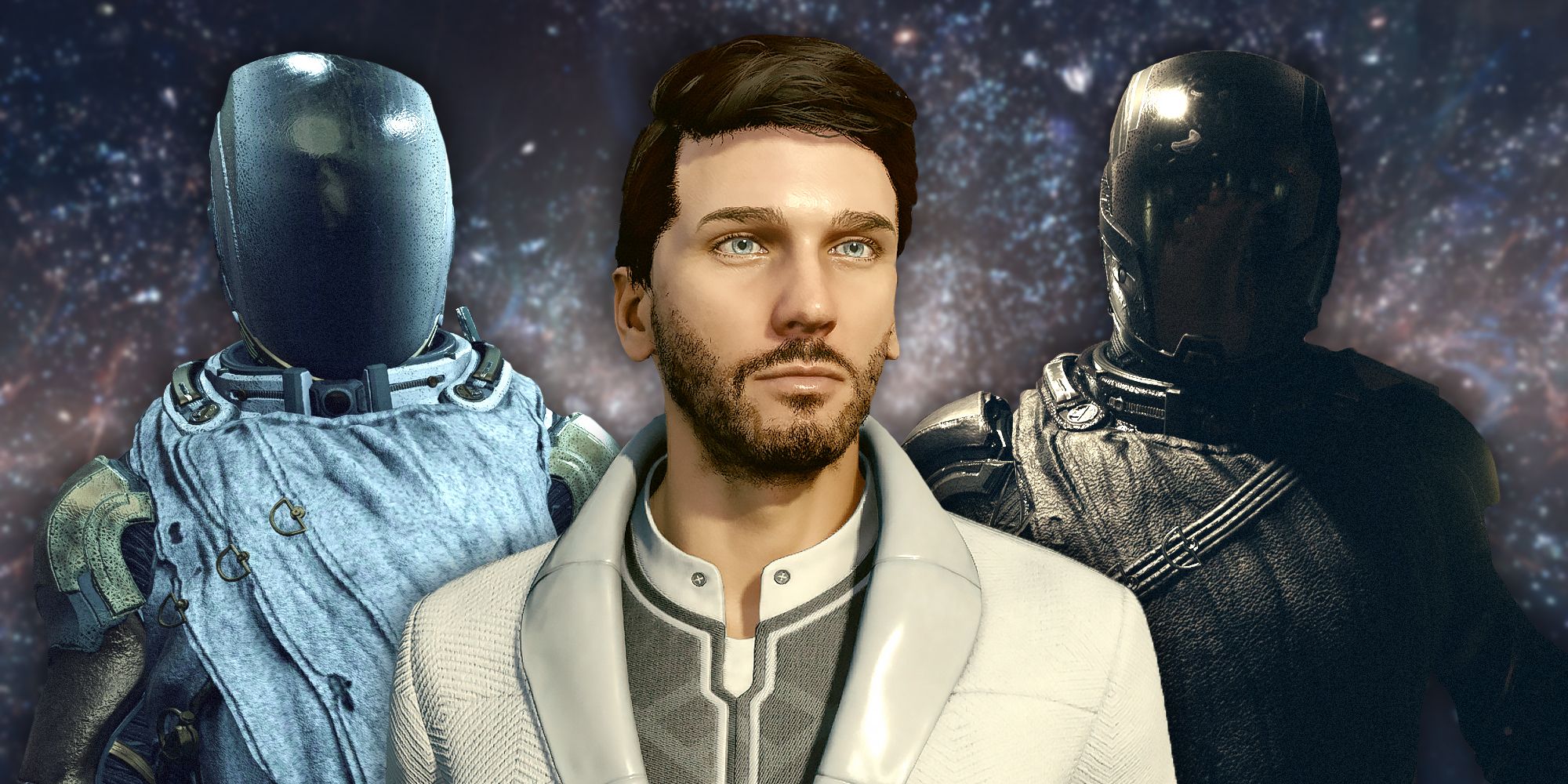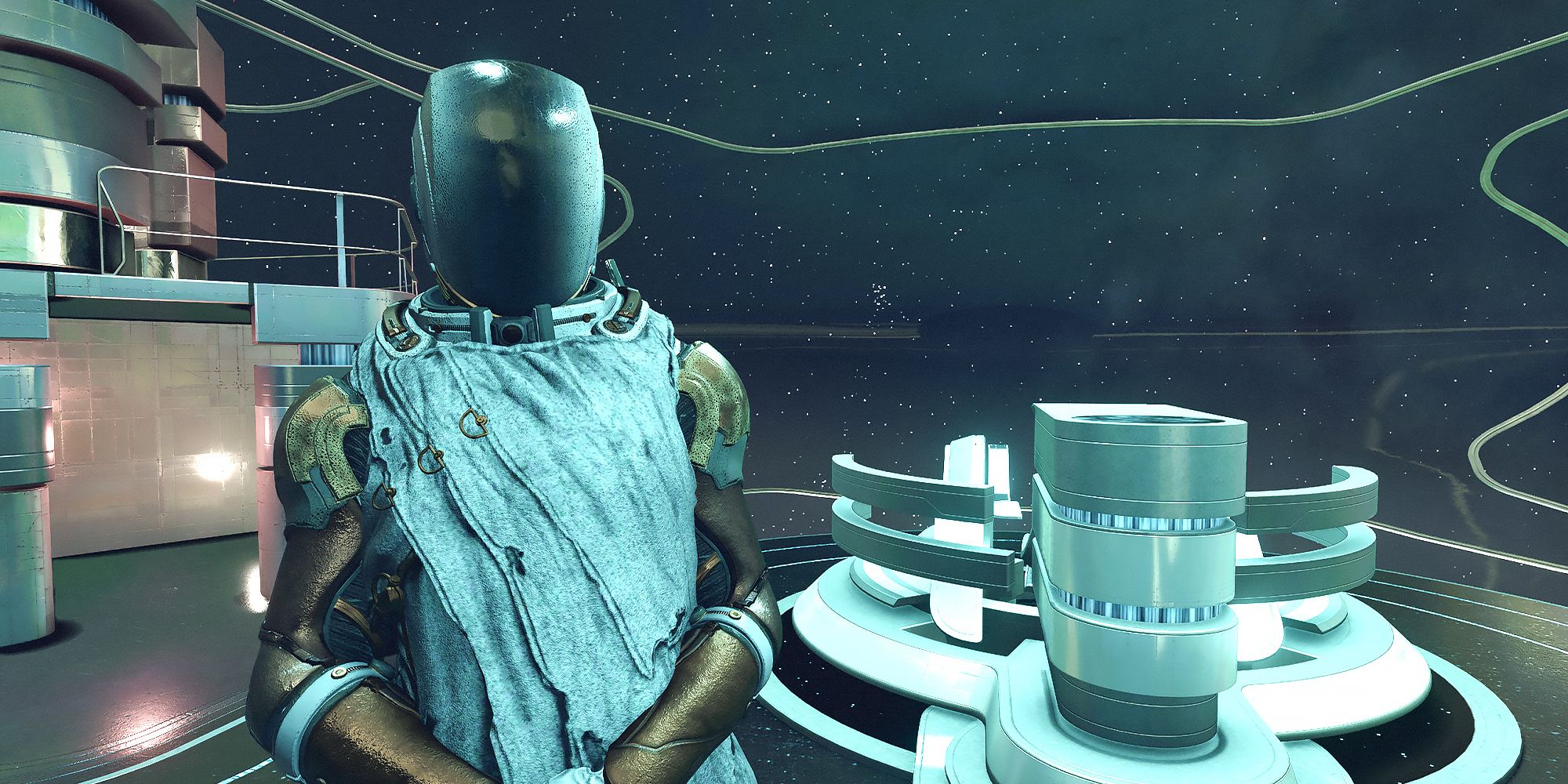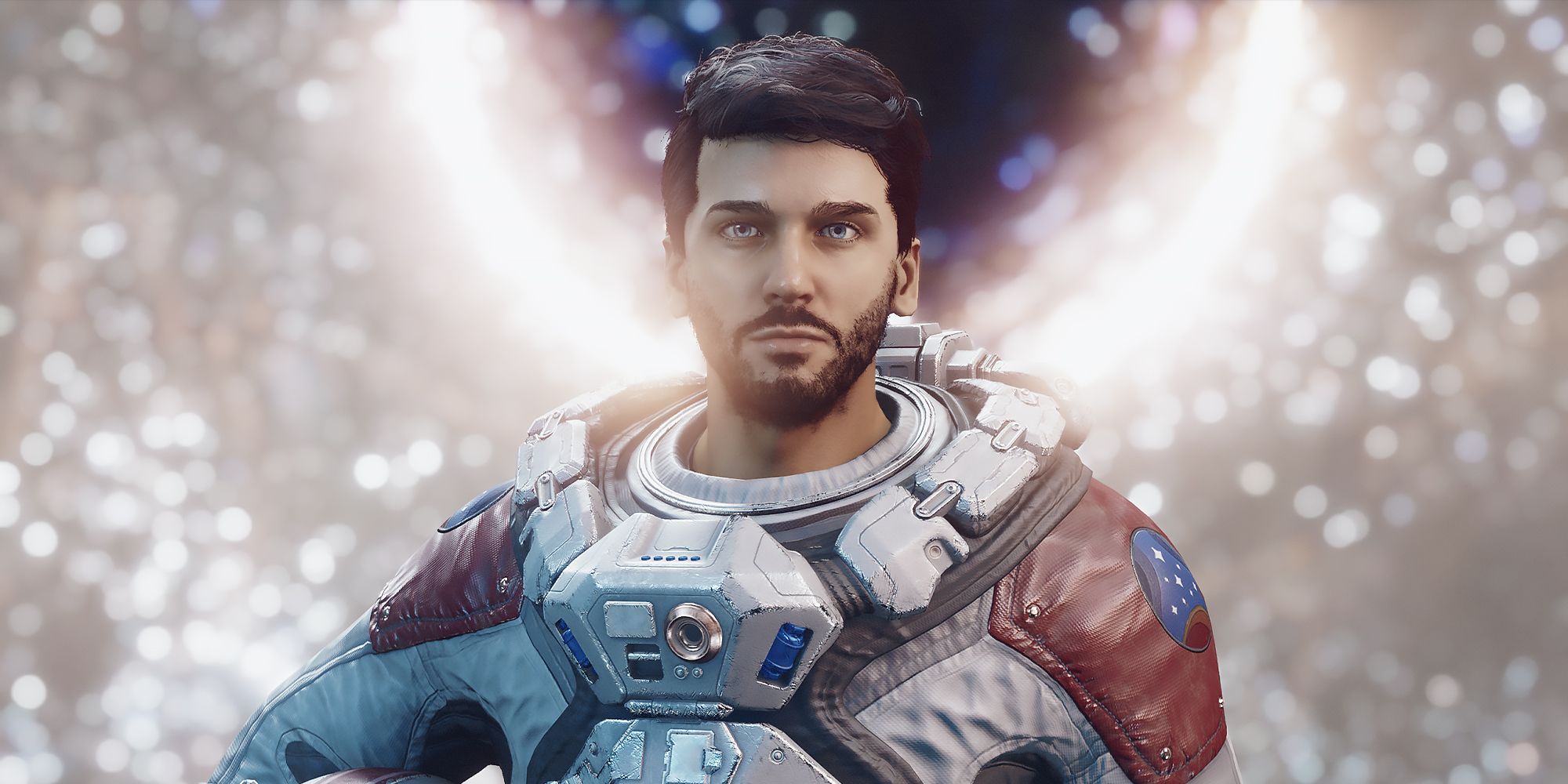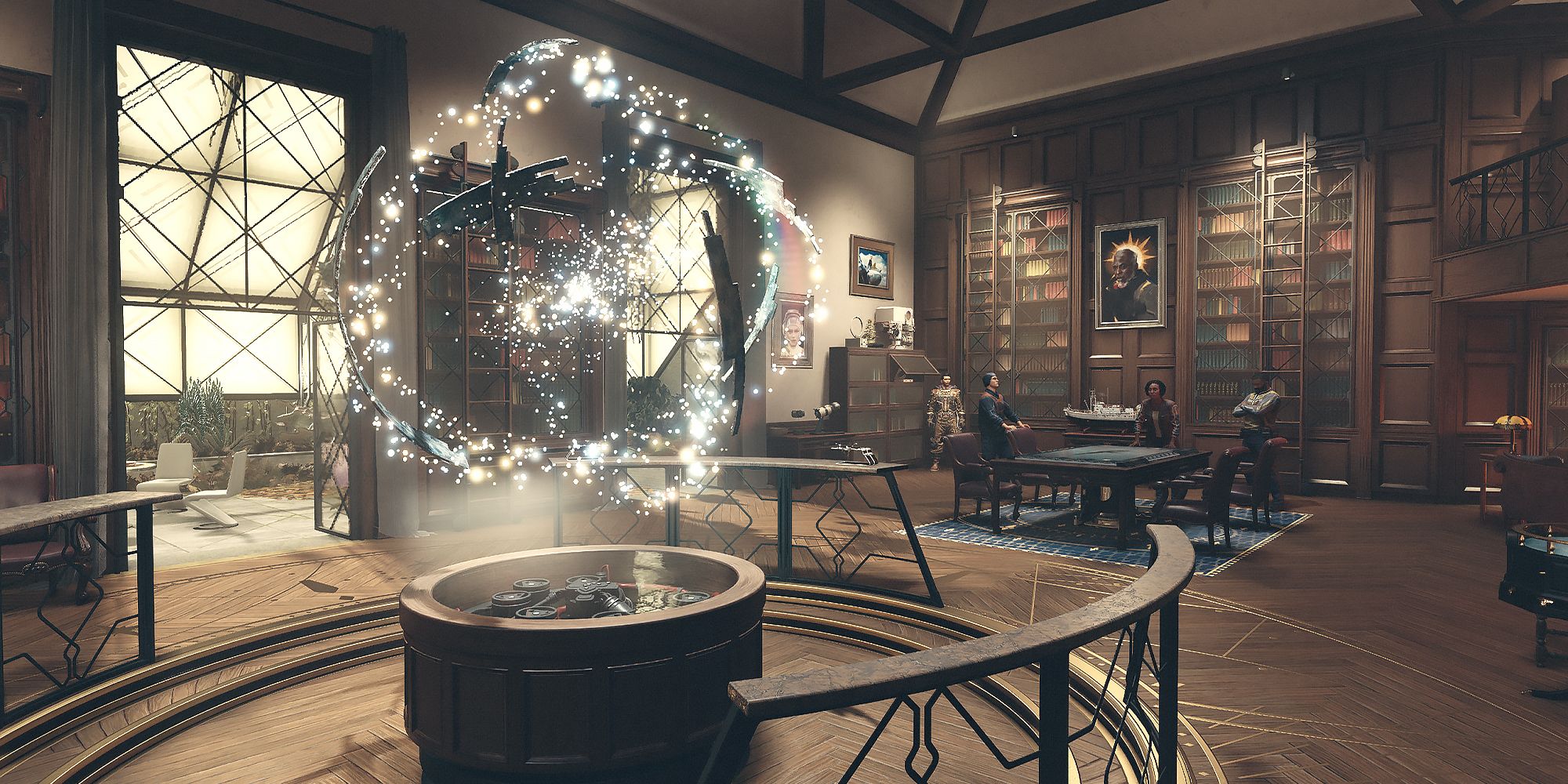The following contains major spoilers for Starfield on PC and Xbox Series X|S.
At the center of Starfield‘s conflict are the Artifacts, mysterious relics that, when pieced together, allow the wielder to open the gateway to the Unity—the center of all space and time, and the place where every universe converges. Those who enter the Unity become one of a group of people known as Starborn, as they are reborn in another universe with greater power than before, including the ability to cross universes as many times as they wish. Needless to say, the Artifacts are a sought after prize, and three individuals seek them for their own reasons in the story of Starfield: the Hunter, the Emissary, and the player.
What makes Starfield‘s conflict so unique is that it could be said that each notable individual in pursuit of the Artifacts has justifiable methods for obtaining them before the others. In a way, Starfield creates a world without antagonists, where each main character can be a hero of sorts because there is no visible line between black and white, simply due to the nature of the Artifacts and their true purpose.
The Emissary Wants to Control Who Receives the Artifacts
The first official face-to-face meeting with the Emissary occurs during the “In Their Footsteps” main mission, where players are given an opportunity to learn more about the Artifacts, the Unity, and the Starborn. The meeting begins with the Hunter and the Emissary making their initial arguments about why they pursue the Artifacts, with the Emissary’s largely revolving around a desire to prevent them from falling into the wrong hands.
The Emissary belongs to a group of Starborn who have united in purpose to protect each universe from other, more power-hungry individuals by getting to the Artifacts before anyone else. While their intentions in finding the Artifacts are to prevent others from obtaining too much power, they simultaneously grow their own power as they attempt to control the fate of the Artifacts. Unfortunately, this lends to the hypocrisy that the Hunter repeatedly exposes in them. Still, their intentions remain pure, despite their ignorance, and their desire to protect the innocent ultimately justifies their actions.
The Hunter Appears Willing to Kill for the Artifacts
Players may experience optional, harmless encounters with the Hunter outside the main story at the bars in New Atlantis and Akila City. However, after their first major encounter with him during the “High Price to Pay” main mission, they may initially view him as the primary antagonist of the narrative. After all, he breaks into the Eye and the Lodge in search of the Artifacts, wounding almost everyone in his way and, depending on which choice players make during “High Price to Pay,” killing a member of the team.
After meeting the Hunter and the Emissary during the “In Their Footsteps” main mission, the idea of the Hunter being the primary antagonist becomes rather muddied. The Emissary argues that the Hunter will apparently do anything for the Artifacts, even if that means killing innocent people for them. The Hunter later counters that point by saying that he doesn’t “kill for the Unity” and instead simply “finds the easiest pathway to it.”
As the Hunter finds talking, diplomacy, and waiting for the right moment requires too much time, he chooses to slaughter his way to the Artifacts instead. He suggests in his point that he doesn’t kill because he wants to but because he feels he has no other choice. This doesn’t justify murder by any means. It does, however, shed light on the Emissary’s methods and simultaneously redeems the Hunter’s, from a certain point of view.
The Emissary criticizes the Hunter for killing in order to obtain power, and yet the Emissary threatens the player with death as they are leaving Neon, even saying, “My people have killed for less.” Despite these obvious threats, the Emissary justifies it in the name of keeping the Artifacts out of the wrong hands. So, it could be said that the Hunter and the Emissary both have the same method for obtaining the Artifacts, they simply approach it from a different perspective. In a way, the Hunter is redeemed simply by the Emissary’s existence, and his actions are therefore justified.
Players Can Take the Artifacts for Themselves
The third notable character in Starfield is the most obvious: the player. Upon meeting the Hunter and the Emissary during “In Their Footsteps,” players are given an initial opportunity to explore the options of siding with either Starborn or neither one. They are certainly the odd one out here because, as the Hunter puts it, the player is going to be the one to “tip the scales one way or another.”
During “In Their Footsteps,” the player can begin choosing to assist the killer (the Hunter), the manipulator (the Emissary), or they can take the power of the Artifacts for themselves. The harsh reality is that, no matter which of the three sides the player chooses, it will always be in their own best interest. However, since the Emissary and the Hunter both have justifiable methods for obtaining the Artifacts, and the player taking the Artifacts for themselves would simply be to keep them out of the hands of two untrustworthy individuals, any decision they make would be considered justifiable.
Everyone Is in It for Themselves in Starfield
“We’re all in it for ourselves. Some of us are just more honest.” If there is one thing the Hunter says that is absolutely true about the pursuit of the Artifacts, it is this. One reality of Starfield‘s story that it cannot escape is that it ultimately revolves around the desire for power, even if the individual who holds the Artifacts says otherwise.
Only one person can enter the Unity, and they enter it knowing they are leaving their universe and any relationships they’ve built behind in pursuit of greater power. Entering the Unity is of little advantage to anyone but the person entering it, as they go on to become a more powerful version of themselves, a Starborn who can cross universes and who essentially has power over death itself. As such, it’s impossible to enter the Unity on entirely selfless terms. This makes what the Hunter said true; everyone is, in fact, in it for themselves.
This reality makes Starfield‘s conflict not so much one of good versus evil or right versus wrong, but simply a conflict of reasoning. The Hunter is clearly in it for himself, and he is not ashamed to admit it. The Emissary is in it for themselves, as they hide behind self-righteousness in an effort to control others into following their rules. And the player can choose to side with one of them or take the Artifacts for themselves in order to enter the Unity uninhibited by other Starborn.
This means there are no “wrong hands” the Artifacts can fall into, although the Emissary suggests otherwise, but perhaps this also means there are no “right hands” either. It is a struggle for power, after all, and one could argue that too much power can and will corrupt anyone, regardless of how pure their intentions may be before obtaining it. However, that argument is moot in Starfield since “the Unity itself doesn’t judge,” as the Hunter so eloquently puts it. The power the Unity offers for one to become Starborn is up for grabs by anyone—it is the Unity’s to give, and it gives without judgment.
With no “wrong hands” for the Artifacts to fall into in Starfield‘s narrative, there is also no true antagonist. The Emissary may see the Hunter as the antagonist, but it is only through the lens of their personal values and desire for control that he is seen as such. The Hunter may see the Emissary as the antagonist simply due to the blatant hypocrisy he witnesses in their so-called morals.
The player could also be seen as the antagonist by both the Hunter and the Emissary, should they choose to pursue the Artifacts alone, without the assistance of either Starborn. Nevertheless, despite these varying perspectives, the Unity does not choose who it gives power to by first evaluating one’s goodness or morality. The stance of all three characters is therefore justified, making each of them the protagonist of their own story, as well as the overarching story of Starfield.
Starfield essentially having three protagonists makes for a rather compelling story. Players may find it difficult to choose whether to side with the Hunter or the Emissary once they’re given the option to do so, simply due to the validity of their arguments, which may in turn lead them to partnering with neither and going it alone. Bethesda has certainly stayed true to their promise of giving players the opportunity to tell their own story, especially as there is seemingly no wrong way to tell it. This is one approach to storytelling that is sure to have a lasting effect on the gaming industry, especially in the role-playing genre.





